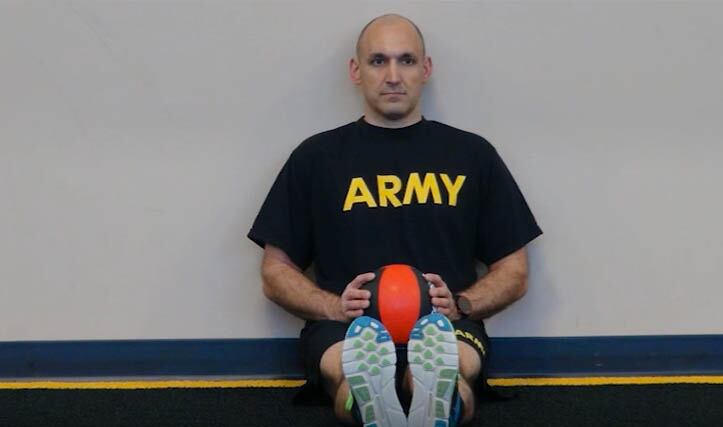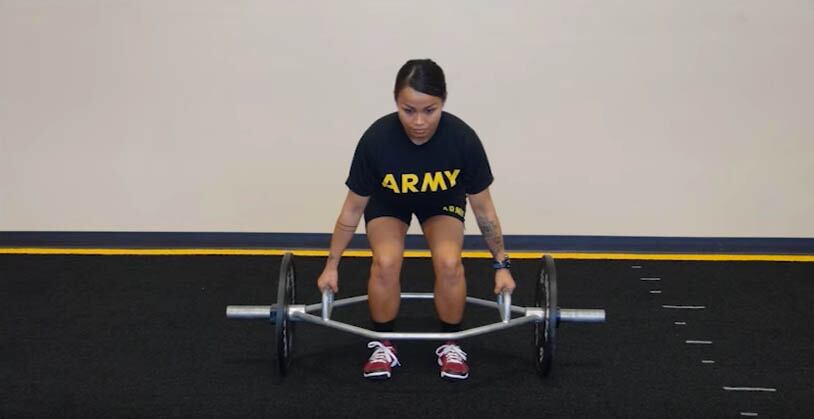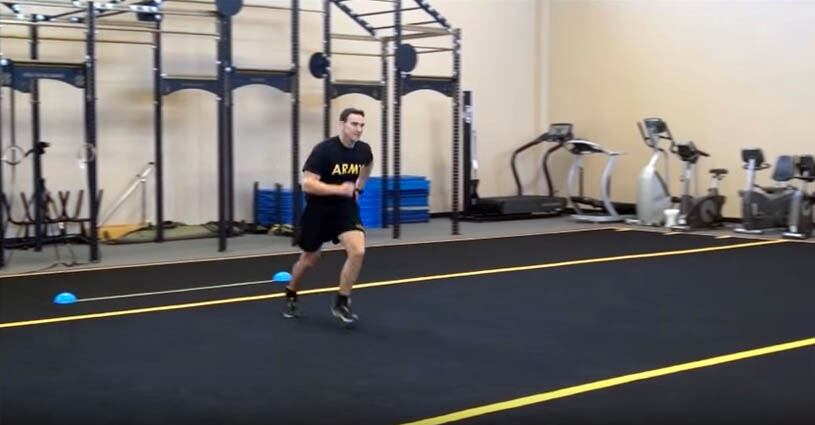The Occupational Physical Assessment Test, a new way to measure physical aptitude of recruits, is tentatively scheduled for a June roll-out. If you have 30 minutes to burn, you can watch the Army's official OPAT instructional video here. In the meantime, here's what we know about the four physical events:
![Army will soon roll out new PT test for recruits [oembed : 84284244] [oembed : 84284244] [oembed : 84284244] [oembed : 84284244]](/Portals/_default/Skins/PrestoLegacy/CommonCss/images/smartembed.png) Standing long jump
Standing long jump
Why: Measures lower-body power – muscles used in repetitive lifting and carrying tasks such as offloading supplies or ammunition.
How: "At least two submaximal practice jumps," according to the Army’s instructional video, followed by "three successful jumps," with the results of each recorded to the nearest centimeter.
Do: Make up to four arm "counter-movements" – swing your arms back and forth as part of the jump motion.
Don’t: Hop before the jump or take off with one foot. And don’t forget to stick the landing – you may be asked to repeat the jump if you stumble forward or to the side, and you will be asked to re-do it if you fall or stumble backward.

A soldier demonstrates the seated power throw.
Photo Credit: Army
Seated power throw
Why: Measures upper-body power – muscles used in repetitive, but generally stationary tasks such as loading ammunition.
How: Recruits sit on the floor with their lower back against a 9-inch-long, 6-inch-wide, 3-inch-deep yoga block and their upper back against the wall, legs out straight. On "go" from the test-giver, they hold a 4.4-pound medicine ball to their chest, pause, then "push/throw … upwards and outwards at a 45 degree angle," per the Army instructional video. Two practice throws followed by three that count, with all scores recorded to the nearest quarter-meter.
Do: Keep your back on the pad/wall. Flex your wrists at the end of the throw for extra distance.
Don't: Pretend you're Stephen Curry – a basketball-style release will cost you distance and could force a re-do.

The strength deadlift can measure a soldier's ability to pull a wounded soldier to safety.
Photo Credit: Army
Strength deadlift
Why: Measures lower-body strength – critical for casualty evacuation, for example.
How: After a practice lift to check for proper form, recruits will use a hexagon barbell to deadlift 100 pounds, then 140, then 180 and finally 220. One lift per weight, no skipping lifts – all successful lifts will be recorded. One minute's rest allowed between lifts. Fail a lift? You get a re-try after a one-minute break.
Do: Maintain proper deadlift form, with knees under shoulders and aligned with toes. Keep your head up and your heels on the ground. Test-givers will watch for poor form and disallow lifts.
Don't: Be a hero. Test-givers also will watch for recruits who may injure themselves. Part of the event instruction, according to the Army video: "If you feel any pain or discomfort, put the bar down."

The interval run is set up at 20 meters.
Photo Credit: Army
Interval aerobic run
Why: Measures aerobic fitness – necessary to move under fire or for other short-burst activities common to combat situations.
How: A recruit jogs down a 20-meter course, then jogs back after hearing a beep. After a minute or so of warm-up, the beeps begin getting closer together. Test-takers must reach the line before the beep – get beat by the beep three times in a row, you're done. Test-givers will record the recruit's last successful interval.
Do: Keep plugging, even after you start falling behind. The three-strikes-and-you're-out counter resets if you beat the beep, so one or two well-timed, full-out sprints could extend your time on the course.
Don't: Show off by sprinting through the early intervals. Use the time to limber up, and save your energy for when time gets tight.
Kevin Lilley is the features editor of Military Times.




